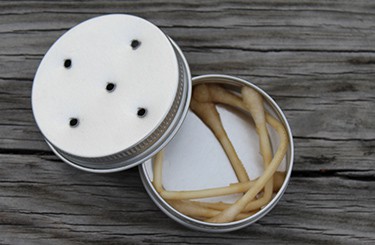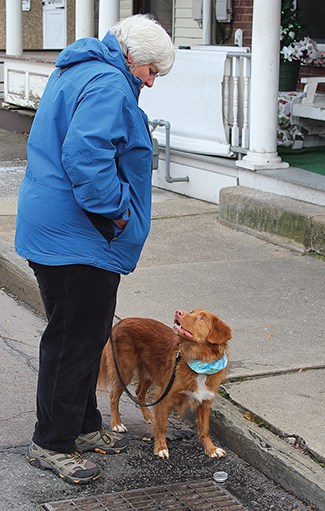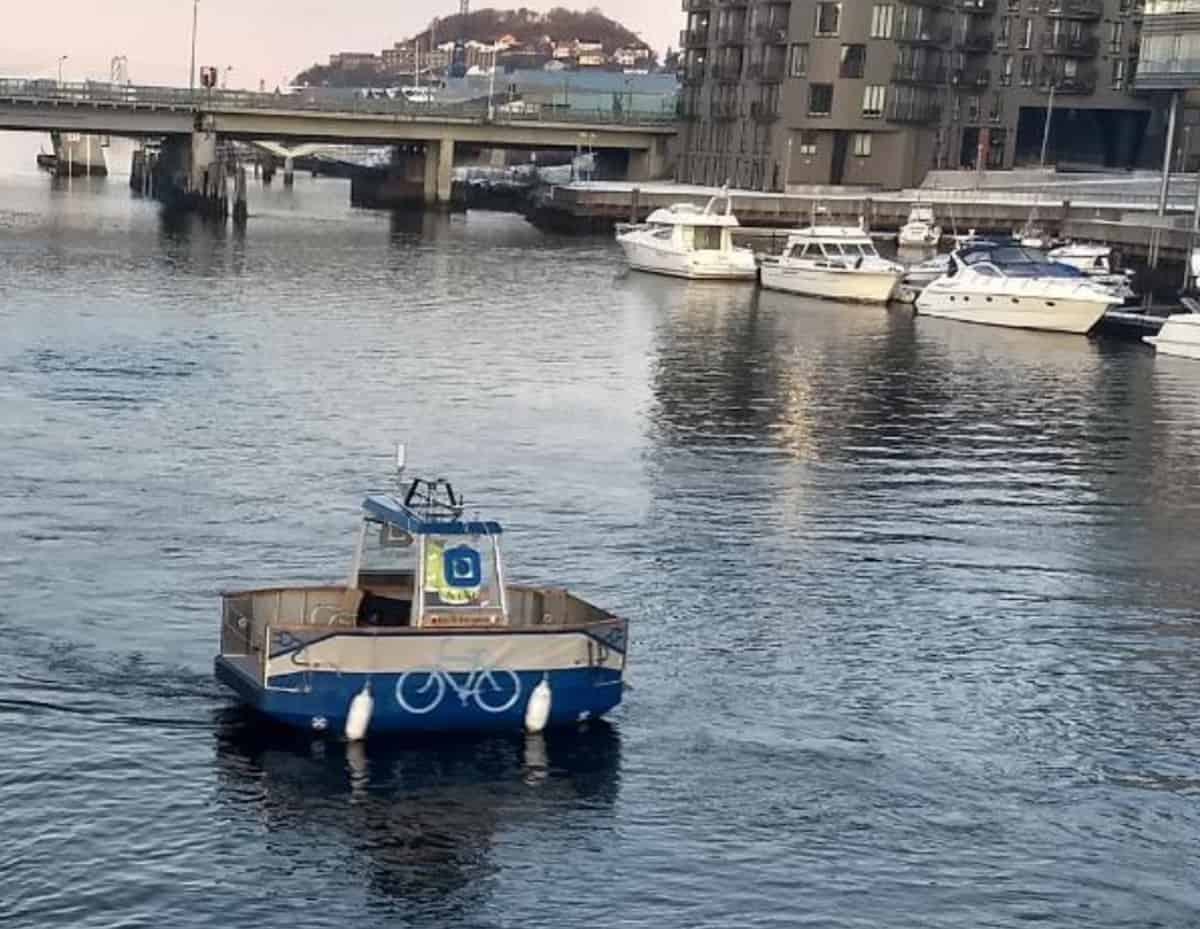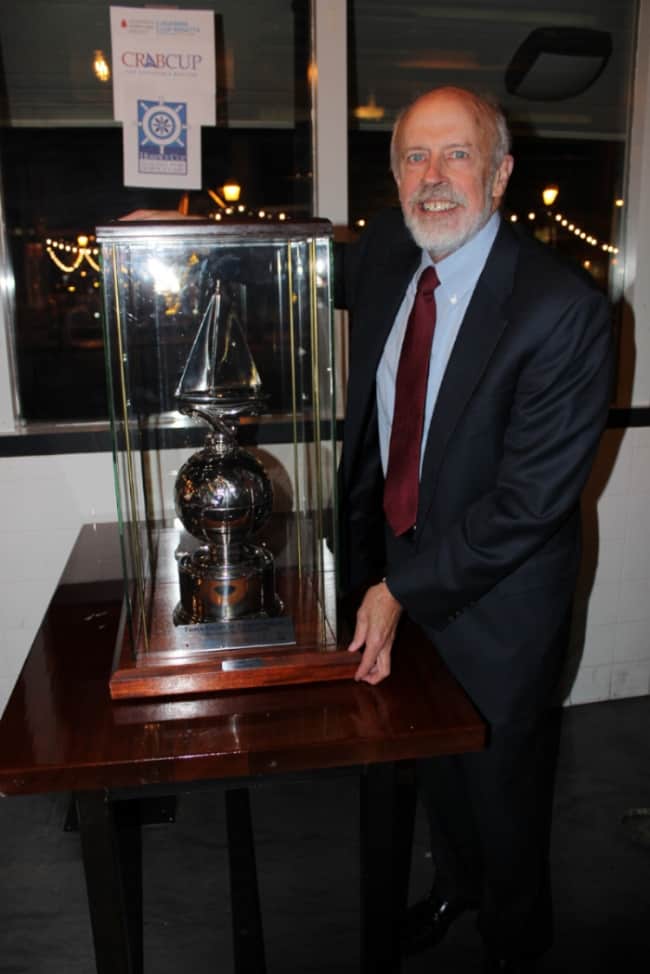By Donna Morelli, Bay Journal News Service
Carol Parenzan became the Middle Susquehanna Riverkeeper in July 2015 and was charged with protecting and improving the health of the river’s watershed between its north and west branches. Shortly afterward, her first staff member came on board: a rusty-colored fluff ball of energy named “Little Keeper” Susquehanna, or Sussey for short.
Parenzan said that the dog is a great mascot for her work. “It’s a connecting point. He draws more people to me when I’m out.” But Sussey has work to do, too. The Nova Scotia duck tolling retriever is 3 years old and is in training to sniff out leaking septic systems, illegal discharges into waterways and broken sewer pipes — all of which can contaminate local streams and the Susquehanna River.
To train Sussey, Parenzen makes a weekly trip to the wastewater treatment plant to get a small vial of effluent, then dips a cotton swab into the vial and places the swab into a small tin with a punctured lid.
She places the tin among identical tins with a different scent or no scent at all. Sussey’s job is to find the effluent — and he usually succeeds in 20–40 seconds.
In the next step, Parenzan plans on moving the practice indoors and making the task harder by using buckets of water containing small amounts of effluent.
Sussey should be offering his services to local governments or environmental groups in the near future.
“I have a pretty good feel for what is under our feet,” said Parenzan, who is trained in subsurface utility and environmental engineering. “Together, we’ll make a powerful consulting team.”
The contamination of surface waters with raw sewage from septic or sewage systems can be a serious problem. Pathogens from fecal material contain bacteria, viruses and protozoa that can cause anything from a brief stomachache to parasitic infestations and fevers that require more care.
The problem is more common than many realize. Pathogens impair 159,425 river and stream miles in the nation, according to the Center for Watershed Protection. The U.S. Environmental Protection Agency, which oversees drinking and surface water quality, has developed more management plans for pathogens than any other pollutant.

The source of contamination, whether from a point source like a pipe or nonpoint source runoff from land, is often difficult to find and control. Traditionally, field staff go out with their maps and human eyes and can only detect contamination after sample after sample of water is pulled from stormwater drains, outlet pipes and streams suspected of contamination and sent to a lab. If a positive result comes back, there is still the work of tracing it back to its source, which could be as close as an adjacent pipe or miles away. Waiting for results can be as expensive and time-consuming as the field work.
Enter the dog. A trained dog can visit the same spots and use its 300 olfactory receptors to quickly detect the presence of sewage, narrowing down where samples should be pulled. A dog can also sense sewage in places where it would be difficult or impossible to take a sample, like an outlet pipe or catch basin that is dry or has very low flow.
A sewage-sniffing dog can even determine whether the fecal matter is from humans or animals. Local governments, waste authorities and others who survey an area for sewage leaks are usually looking for human material, because that is the source of pathogens most likely to be transmitted to people.
The canine ability to sniff out even minute concentrations of substances has served humans for centuries — they’ve been trained to detect bombs and to search for lost humans, cadavers, drugs, bedbugs and cancer. While turning that talent toward sewage leaks is fairly new, Sussey is not the only one to be enlisted by a riverkeeper: The Savanna Riverkeeper in Georgia is training a canine for a career like Sussey’s.
Environmental Canine Services, a company based in Maine, has sewage-sniffing dogs and handler teams located across the country. In 2015, the Center for Watershed Protection and the state of Vermont hired the company to see if the dogs would improve the results of the state’s illicit discharge detection and elimination program.
“The dogs make the field work a lot faster,” said Laurel Williamson, a stormwater and watershed planner with the center who would like to see more dogs available for such work. “It’s a presence or absence situation. They get an idea at each catch basin and either bark or lay down. We record the results and use that information to prioritize the next move.”
While Sussey continues his sewage sniffer training, he still fulfills his role as a mascot of the Middle Susquehanna Riverkeeper, a role for which he needs no training. His bright expressions and a downy, red-hued coat that begs to be stroked are all he needs to lure new followers to him and his mission.



